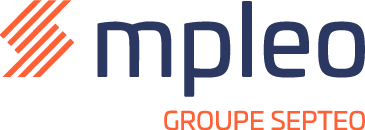
Everything you need to know about annual reviews and how to turn them into an effective tool for your teams
Although the annual review has become institutionalised in many organisations, it is still sometimes seen more as an administrative burden than a strategic tool. Yet these reviews are far more than just routine HR meetings. When conducted properly, they can become a powerful lever to engage employees, drive performance, structure career paths, and strengthen both company culture and the employee experience.
However, this requires a full understanding of their scope: what are these reviews actually for? What is the difference between an annual review, a professional development review, and a review related to the forfait-jours (fixed working days scheme)? What are the legal obligations? And above all, how can they be made useful, effective, and appreciated by all? You’ll find all the answers in this article.
What are HR reviews for, and what are the legal requirements?
A review is a structured conversation between the manager and the employee, used to reflect on the past year. For HR, it is a strategic tool for managing talent and engagement. For managers, it is an opportunity to strengthen relationships with their teams, align expectations, and identify potential. For employees, it is a space for being heard, receiving recognition, and discussing their future. It’s the right moment to talk about career development, for instance.
Malheureusement, ces entretiens sont parfois vécus comme une formalité obligatoire, déconnectée de la réalité du travail quotidien. Pour être réellement efficaces, ces entretiens doivent être clairs dans leur finalité, bien préparés, adaptés au contexte métier et intégrés dans une stratégie de suivi globale. De plus, on distingue plusieurs types d’entretiens, chacun répondant à des objectifs spécifiques, des obligations légales particulières et qui ne doivent pas être réalisés pour les mêmes raisons :

The Annual Performance Review
This is the most well-known and commonly practised review. Typically held once a year, it allows for a recap of the past year: achievement of objectives, results, challenges faced, professional behaviour, team contribution, and so on. It is also used to set objectives for the coming year and is often based on a pre-defined evaluation grid. It may sometimes follow the professional development review.
Although not legally required, this review is widely used in organisations. When implemented, it must follow certain principles, such as transparency, equal treatment of employees, and non-discrimination. It often relies on a formalised evaluation framework.
The Professional Development Review
In accordance with Article L6315-1 of the French Labour Code, a professional development review must take place every two years and should also be offered upon return from certain long absences (such as maternity leave, parental leave, or long-term sick leave). This is not a performance review, but a discussion about the employee’s professional development prospects (mobility, role changes, training plans, recognition of prior experience, etc.).
Every six years, the professional development review must also include a summary of the employee’s training history. The employer must demonstrate that the employee has received at least one non-mandatory training course, has had a professional review every two years, and has experienced at least one form of progression (in terms of salary or position).
If these requirements are not met, companies with more than 50 employees must pay a corrective top-up of €3,000 to the employee’s CPF (personal training account). Therefore, it is in HR’s best interest to optimise their review processes, secure procedures, train managers on how to conduct them, and ensure proper documentation of discussions. HR departments can turn to specialised review management software for support.
The Forfait-Jours Review
This review is legally required once a year and aims to ensure that working conditions remain sustainable for the employee. During the meeting, the manager and employee discuss key aspects such as workload and rest time, work-life balance, and the level of autonomy in organising work.
Beyond its managerial relevance, this review carries significant legal weight. Failing to conduct it can lead to serious consequences, such as the reclassification of the employment contract as a standard full-time contract, with back pay for overtime. More broadly, the collective agreement governing the forfait-jours arrangement could also be challenged. Not fulfilling this obligation can also heighten psychosocial risks and increase the likelihood of disputes before employment tribunals.
Unfortunately, these reviews are sometimes perceived as a mere formality, disconnected from the reality of daily work. For them to be truly effective, they must have a clear purpose, be well-prepared, tailored to the business context, and integrated into a broader follow-up strategy.

Additional HR Interviews
There are several other types of optional but recommended interviews that some companies choose to implement depending on the situation:
- Return-to-work interview (following sick leave, maternity leave, etc.): to facilitate reintegration into the team.
- Mobility interview: to explore potential role changes or internal career moves.
- End-of-assignment or exit interview: to gather feedback and insights from the departing employee.
What are the benefits of a well-conducted review campaign?
A structured, seamless, and engaging review campaign brings many benefits—provided it is well-prepared, properly followed up, and valued throughout the organisation. Here are the key advantages for different stakeholders in your company:
Benefits for your organisation
- Improved visibility of internal skills and competencies
- Alignment between business strategy and employee objectives
- Early identification of talent and development needs
- Stronger workplace culture through open dialogue and feedback
Benefits for your HR teams
- Collection of qualitative data to inform HR policy (training, mobility, compensation, etc.)
- Legal compliance traceability and risk prevention
- Enhanced workforce and skills planning (strategic workforce planning)

Benefits for your managers
- A tool for both individual and team management
- A moment of recognition and clarification of mutual expectations
- Early detection of warning signs (disengagement, stress, overload, etc.)
- Strengthening of leadership skills
Benefits for your employees
- A chance to be heard and have their contributions recognised
- A clearer vision of career prospects and personalised development
- Identification of skills to be developed
- Increased engagement and a stronger sense of belonging
How to implement a successful interview management strategy
A successful review doesn’t happen by chance. It requires forethought, preparation, attentive execution—and above all, follow-up. For HR, the goal is twofold: create value through constructive dialogue and actionable outcomes, while also simplifying the process for both managers and employees.
An effective campaign is built on three core pillars: anticipation, simplicity, and follow-up. Here are five key tips for rolling out a smooth, useful, and well-received review strategy:
Tip 1: Clarify the objectives of each type of review
Each type of review has its own purpose. It’s vital not to mix them up:
- The annual review assesses performance
- The professional development review explores career progression
- The forfait-jours review addresses work-life balance and working conditions
Formalise these objectives in your HR policy and clearly communicate them to managers and staff to avoid confusion. This gives the process meaning and encourages engagement.
Tip 2: Plan in advance, at the right time
Schedule your review campaign outside of peak activity periods (avoid year-end, major sales periods, etc.). Share a clear timeline, integrated with the tools your managers use (calendars, HRIS, etc.). Good logistical planning eases pressure and ensures your teams are mentally available.

Tip 3: Train your managers
Managers are at the heart of the process. An effective review depends on their ability to listen actively, provide balanced feedback, detect early warning signs, and activate the right HR levers. Offer them short, practical training (workshops, e-learning) focused on active listening, managerial posture, and legal fundamentals. With the right support, they can conduct these meetings confidently and professionally.
Tip 4: Keep formats simple and fit for purpose
There’s no need for overly long two-hour interviews. Use clear, targeted templates tailored to different roles or hierarchical levels, and avoid overlap between review types. Also consider scheduling informal check-ins throughout the year to keep communication flowing and avoid overload.
Tip 5: Ensure real follow-up
The review shouldn’t be a tick-box exercise. Formalise any decisions or actions (training, internal mobility, role adjustments, etc.), keep a secure record, track implementation over time, and review the overall campaign at year-end to continuously improve your practices.
Simplifying annual reviews with effective tools
Digital transformation has significantly changed how reviews are managed. Here are some technological tools to support you in this process and ease your daily workload. These solutions will not only save you time but also enhance the quality of listening and follow-up.

An HRIS (Human Resources Information System)
Invest in an HRIS to centralise the planning, execution, follow-up, and analysis of reviews on a single platform.

AI assistants
Use generative AI to identify early warning signs (disengagement, overload, etc.) and suggest tailored actions (training, mobility, etc.). Naturally, this must be done securely, without sharing any personal data with AI systems such as ChatGPT.

Tailored materials
Use online questionnaires, personalised interview templates, and preparation guides for both managers and employees.
Key Takeaways
Annual reviews, professional development reviews, and other types of HR interviews are far more than mere obligations. When conducted effectively, they become drivers of performance, engagement, and development. These reviews enable structured dialogue between managers, employees, and HR—provided they are well-prepared, differentiated according to their objectives, and followed up over time.
It is essential to respect the legal framework, equip managers with the right tools, and automate processes while maintaining a human touch. This is where HR plays a pivotal role—providing strategic support and ensuring coherence across the board.
Want to go further and make your review campaigns more efficient and straightforward?
Request a demo of our HR software to discover how it can become a true tool for management and employee engagement.

